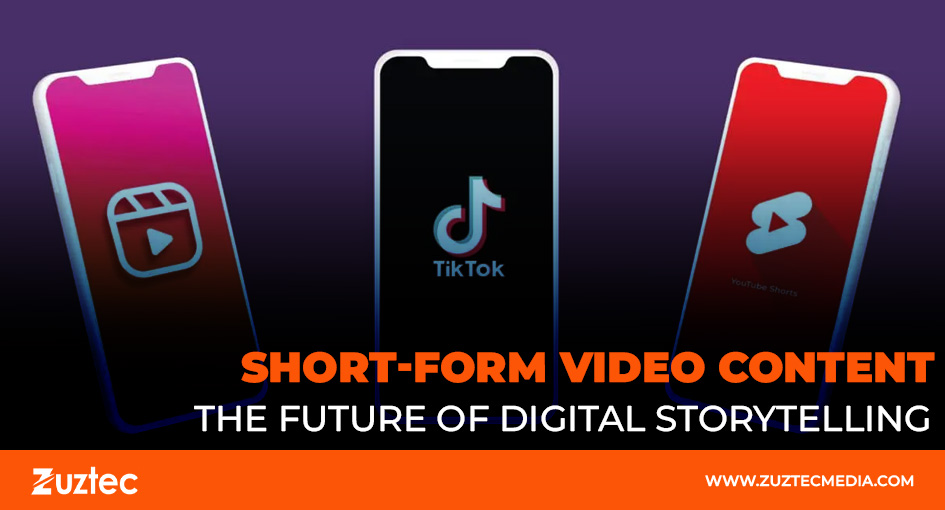
Short-Form Video Content: The Future of Digital Storytelling
In a world where attention spans are shrinking and competition for digital real estate is intensifying, short-form video content has emerged as the crown jewel of online engagement. From the rapid-fire dance trends on TikTok to the informative reels on Instagram and YouTube Shorts, this format has taken the internet by storm. It’s not just about entertainment anymore—businesses, educators, influencers, and even government bodies are jumping on board to reach audiences where they spend the most time.
The rise of short-form video content is no accident. It’s the natural evolution of how users prefer to consume information in a hyper-connected era. Bite-sized, visually engaging, and emotionally resonant, these videos tap into the psychology of instant gratification and keep users scrolling for more. But beyond virality, there’s a deeper transformation underway: how stories are told, how brands are built, and how communities are formed around seconds-long clips.
Why Short-Form Video Content Dominates Today
The Appeal of Instant Consumption
The allure of short video content lies in its simplicity. Whether it’s a 15-second product demo, a funny skit, or a quick tutorial, this format delivers value without demanding much from viewers. In today’s mobile-first world, most people prefer content they can consume in spare moments—during a commute, in between meetings, or while waiting in line.
Platforms like TikTok and Instagram have capitalized on this trend by designing interfaces that make content discovery seamless and addictive. The auto-playing, vertically optimized videos cater perfectly to mobile devices, creating an immersive experience that keeps users engaged longer than even traditional media formats.
Algorithmic Discovery and Virality
One of the standout features of short-form platforms is their algorithmic content discovery. Unlike older platforms where followers determine reach, TikTok and YouTube Shorts use interest-based algorithms to push content to relevant users—regardless of how many followers the creator has. This democratizes virality, giving even brand-new accounts a shot at massive exposure.
Creators and businesses that understand how to “hook” viewers in the first few seconds often outperform larger players. This environment rewards creativity, clarity, and authenticity more than big budgets.
Creating Impactful Short Videos
Storytelling in Seconds
Crafting a narrative in under a minute may seem like a challenge, but it’s also an opportunity. Many successful creators use the three-act structure—setup, confrontation, resolution—compressed into a few key visuals or lines of dialogue.
Take for example a skincare brand demonstrating a before-and-after using a product within a 30-second span. They show the problem, introduce the product, and display the result—all while keeping the aesthetic clean and relatable. This kind of storytelling doesn’t just sell a product—it builds trust through transparency and visual proof.
Trends, Challenges, and Music
Participating in trending challenges, using popular music, or mimicking viral formats is a powerful way to ride the wave of visibility. TikTok thrives on remix culture, where users build upon existing trends to add their own flair. For brands and creators, this means staying updated on current trends and adapting them to their message or product.
However, jumping on trends shouldn’t feel forced. Authenticity is key. A fitness coach leveraging a trending audio to share a 20-second morning routine has a better chance of resonating than a brand shoehorning a meme into its content strategy without context.
The Role of Editing and Visuals
Editing plays a crucial role in keeping short-form videos engaging. Quick cuts, on-screen text, captions, and transitions add polish and pace. With so many users watching on mute, text overlays or subtitles are essential. Moreover, strong visuals—vibrant colors, symmetry, or striking facial expressions—are more likely to stop the scroll.
Apps like CapCut, InShot, and Adobe Premiere Rush have made mobile editing easy for creators of all levels. These tools offer templates, effects, and sound syncing capabilities that help even novices produce studio-quality clips.
Best Practices for Success in Short-Form Video Content
Know Your Audience
Understanding your audience’s preferences is non-negotiable. Is your content for teens, young professionals, hobbyists, or parents? The tone, music, visuals, and even posting time should reflect the habits of your target viewer. Social listening and analytics tools can help refine this over time.
Optimize for Each Platform
While TikTok, Instagram Reels, and YouTube Shorts all support vertical video, their algorithms, user bases, and features differ. For instance, YouTube Shorts may appeal to educational and how-to content, while TikTok thrives on trends and humor. Tailor your content to fit the platform rather than cross-posting blindly.
Consistency Over Perfection
The algorithm favors regular posting, and audiences appreciate a steady stream of content over occasional masterpieces. Building a recognizable style or niche—be it motivational, comedic, or informative—helps build loyalty and brand recall.
Ultimately, the explosion of short-form video content is more than just a trend—it’s a shift in how we communicate, learn, market, and entertain. It strips away the fluff and gets straight to the point, which is precisely what modern audiences crave. Whether you’re an individual creator, a startup, or a global brand, embracing this format is no longer optional—it’s essential for digital relevance.
As platforms continue to evolve and users demand more immersive experiences, short-form videos will only grow in influence. The opportunity lies in staying authentic, experimenting boldly, and finding your unique voice in a sea of endless scrolling. In just 15 to 60 seconds, the right message can inform, inspire, or even go viral—and that’s the power of short-form video.

